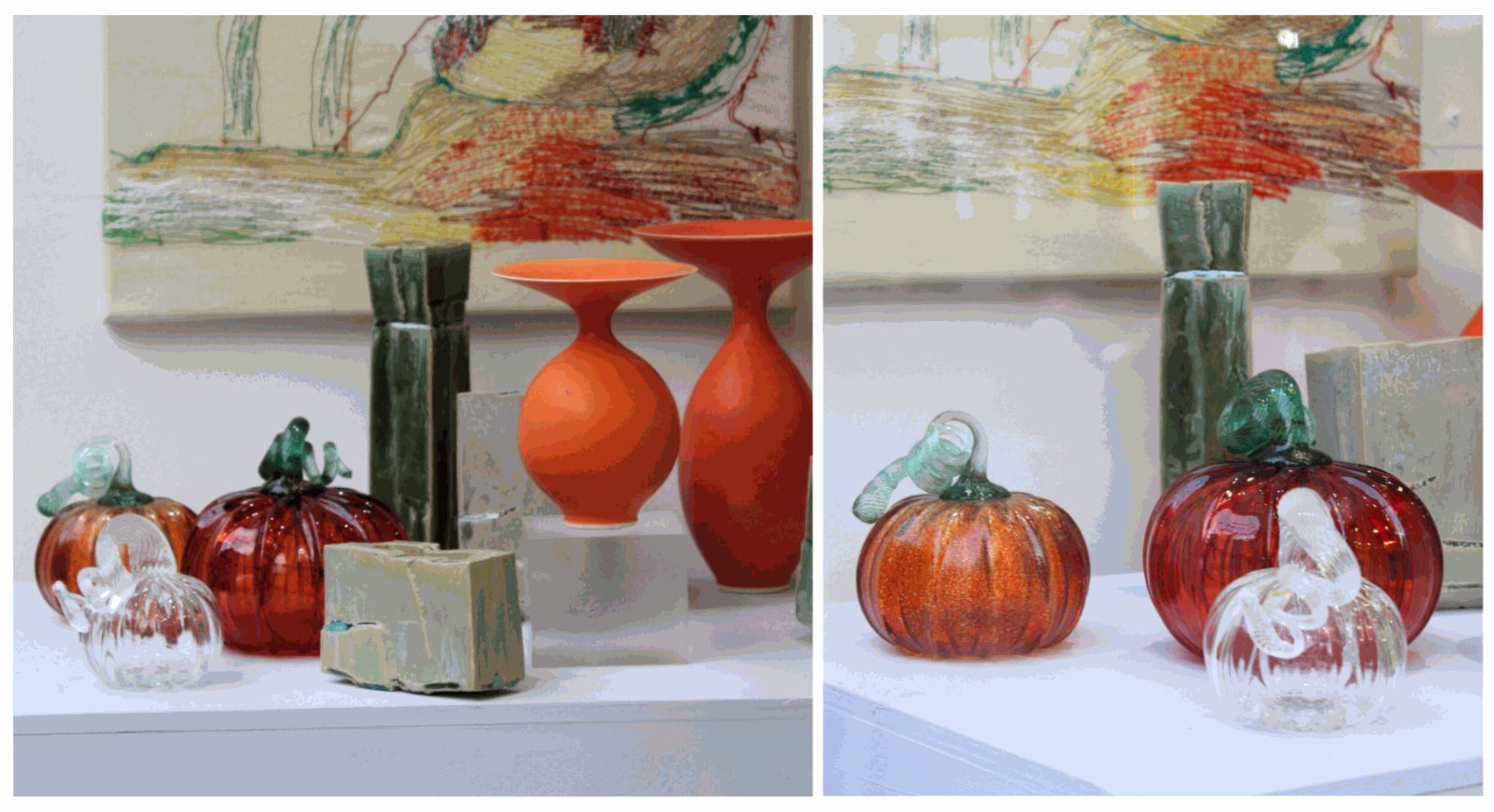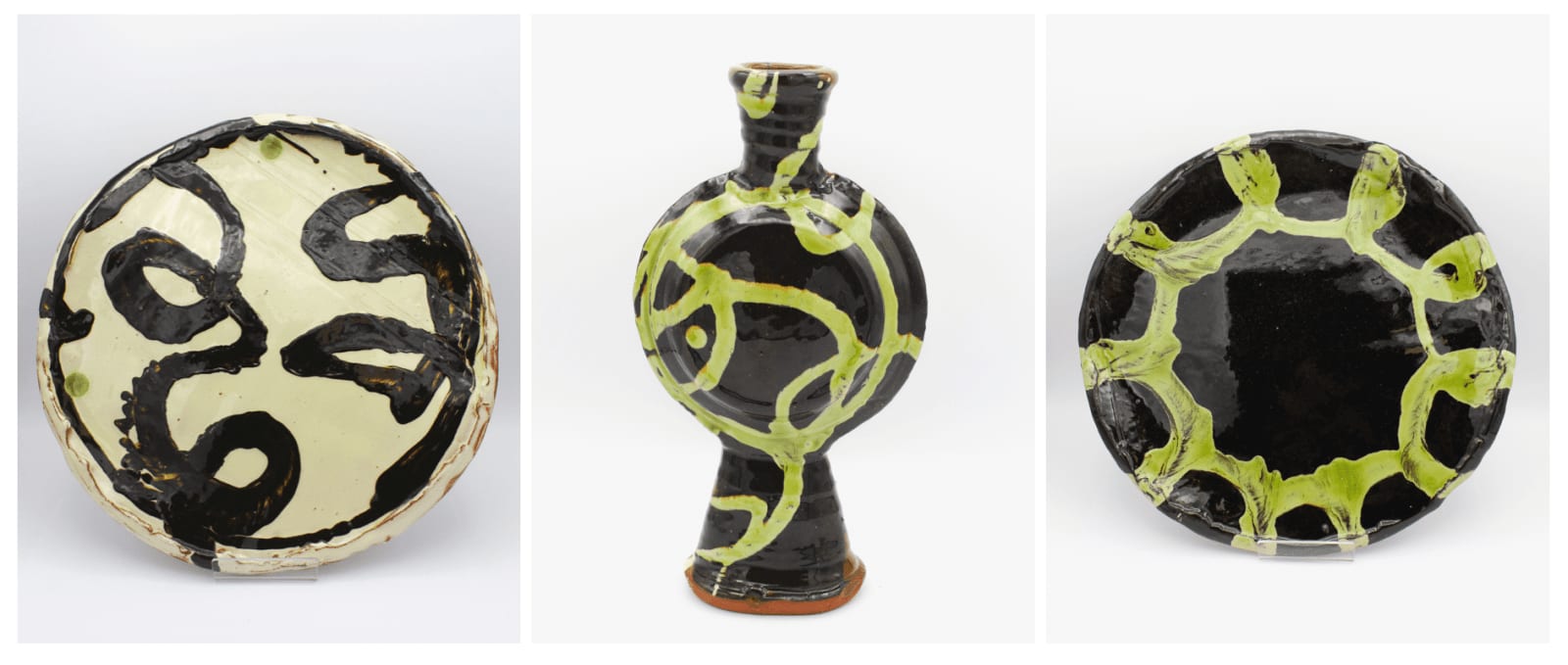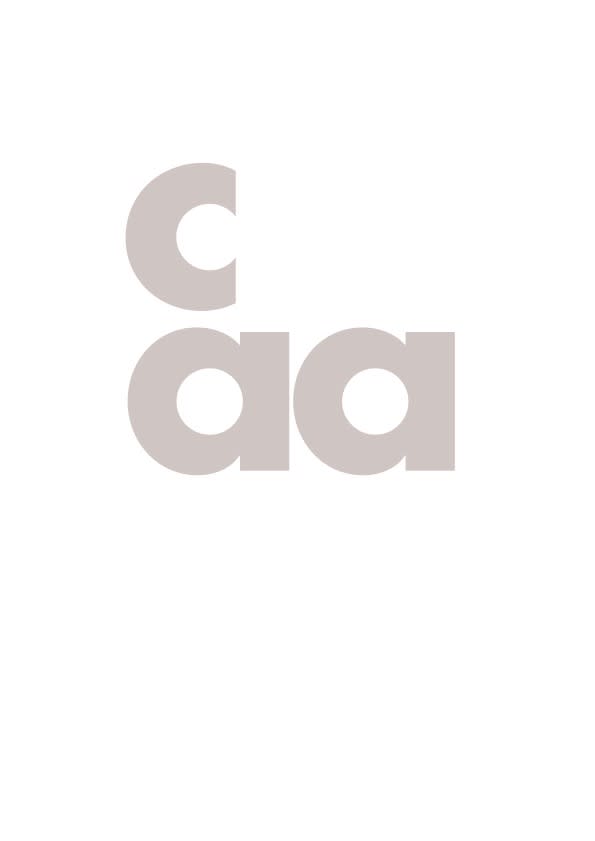
Take a look at our spooky new window display! We've been getting into the spirit of Halloween, spurred on by some wonderful deliveries of ceramic and glass pumpkins from Delfina Emmanuel and Amelia and Charlie Burke. As the evenings draw in, we are drawn to pieces in rich, earthy oranges and mossy greens that bring the colours of a crisp autumn morning into your home. Look out for new glazed earthenware plates and flasks by Dylan Bowen, Japanese-inspired sculptural forms by David Binns, delicate glass perfume bottles by Peter Layton and graphic wheel thrown ceramics by Jane Cox.
If you are hosting friends this Halloween or are after something decorative for your mantlepiece display, pay us a visit at the gallery or take a look at our autumnal edit online at caagallery.org.uk/

A third generation potter from Devon, Dylan Bowen makes slip decorated earthenware, which combines traditional and contemporary influences. He aims to capture some of the fluidity and freedom of the making process, in his loosely thrown pieces. Renowned for his loosely thrown monochromatic work, Dylan’s works are a balance between traditional painting and ceramics. Inspired by music and abstract expressionism, he pours, trails and brushes slip – a liquid form of clay – onto his pieces. Each bottle is created using a combination of wheel thrown and hand-built elements. Dylan prefers to simplify his approach to applying slip and focus on gestural mark-making.

For many years David Binns made sculptural work that involved adapting clay bodies with additions of aggregate materials, polished post-firing. More recently however, he has felt a need to re-connected with the fundamentals of ceramics; involving a more direct and intimate contact with the clay, and for the first time in his ceramic career, exploring both the vessel and glaze. Binns’ working practice combines elements of control and spontaneity, exploring how glaze reacts over differing clay bodies and cut and textured surfaces. Inspiration is drawn from contemporary architecture and natural landscape, whilst being shaped by a deep respect for the fundamental principles of Japanese aesthetics. He hopes that his work alludes to the bold drama and visual richness of natural landscape, whilst simultaneously conveying feelings of simplicity, solitude and quietness.

Growing up in Sardinia, Delfina Emmanuel was surrounded early on by the sagas of Latin and Greek mythology. She has always been intrigued by the symbolisms of these stories, in which plants and fruits are imbued with meaning, representing the abundance and plenty of the harvest. Her new pumpkins and lemons have a beguiling trompe-l'œil quality to them, perfectly mimicking the finely textured surfaces in porcelain.

Peter Layton is known for his bold use of colour and combined use of techniques, including free-blowing, casting and cold work, to realise his organic forms and sculptural larger works. Layton has been at the forefront of promoting glassblowing as an art for decades and continues to push the boundaries of the material through his intimate understanding of the raw material and the techniques used for working it. Some glassmakers create technically brilliant pieces and follow a precise pattern, others prefer to create more abstract works of art that are looser and evolve during the creative process. Layton’s work falls firmly into the latter category and he is known for his strong use of colour, the use of organic forms and the sculptural quality of his larger pieces.

Amelia Skachill Burke is a contemporary hot glass artist, specialising in Glass Cane and Murrine work to create her wall art and vessel forms inspired by the microscopic details of the natural world. Her practice is based on the close study of details of the natural world, such as butterfly wings and fern fronds, redrawing them, scaling them up greatly, and reinterpreting them in the hot glass to create evocative glassware. Amelia's focus is broad, based on a visual compendium of natural subjects such as bamboo, water or butterflies. Her handblown glass pumpkins demonstrate her characteristic whimsy and attention to the details of the natural world, capturing the tactile shapes of pumpkins in delightful glass objects.

Working from her studio on the Isle of Wight, Jane Cox draws inspiration from nature and the landscape around her. Her wheel thrown ceramics are glazed with a speckled blue green glaze which shimmers across the surface, reminiscent of the rhythms of waves in water. Cox allows her designs to flow across her ceramics, connecting pattern and form; the curving shapes within the surface pattern are designed to echo the curves of profiles of the forms underneath. At the heart of Cox’s work is the desire to enhance the way food is held, contained and shared: these are objects intended for use as well as being objects designed to inspire and encourage contemplation.












